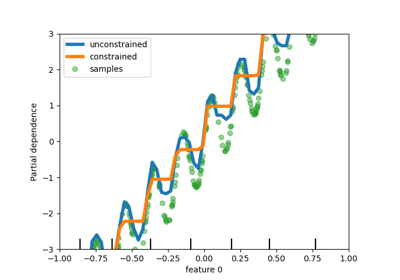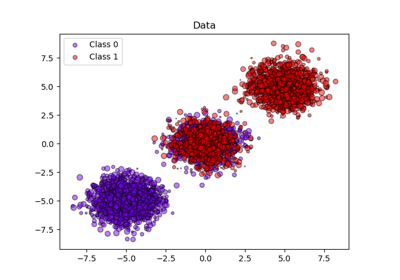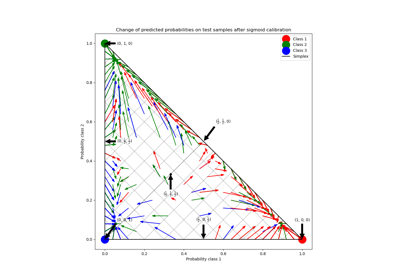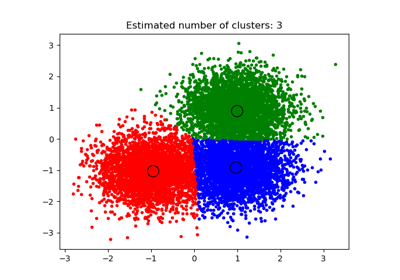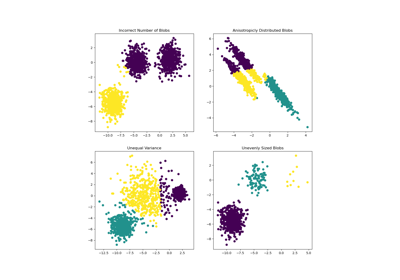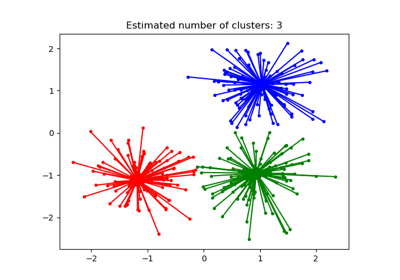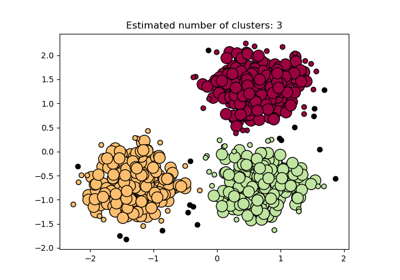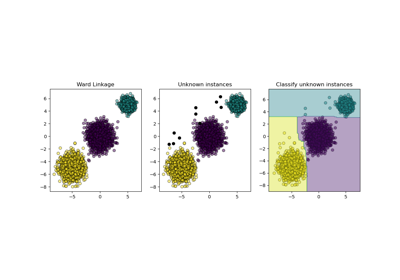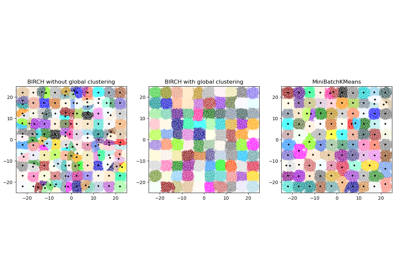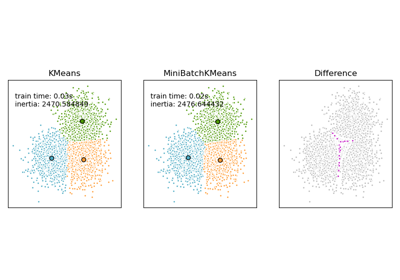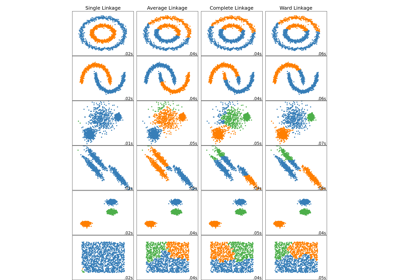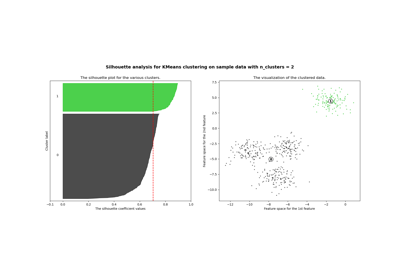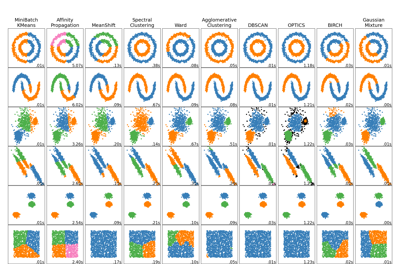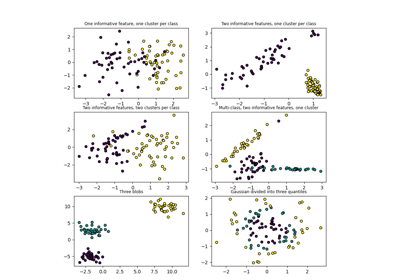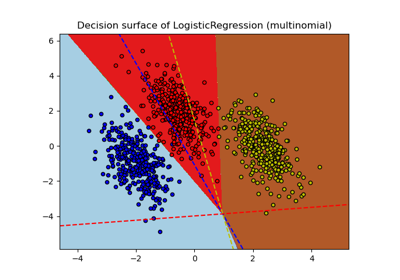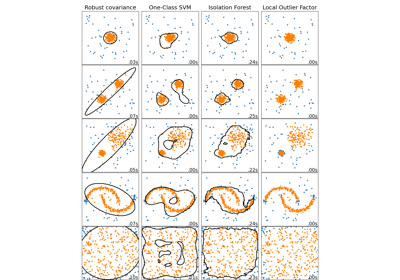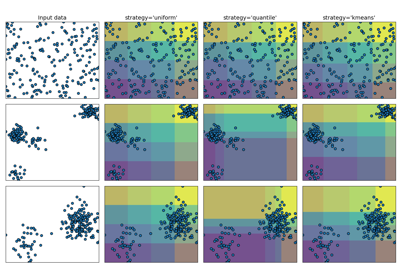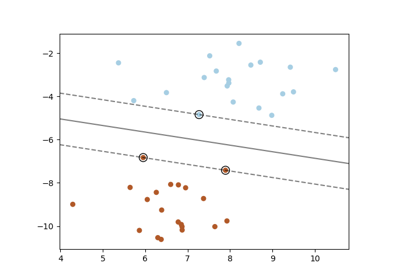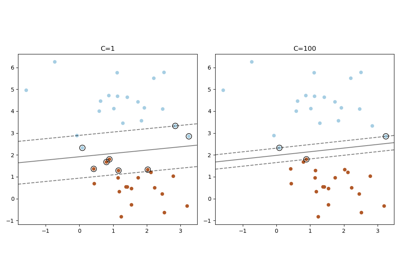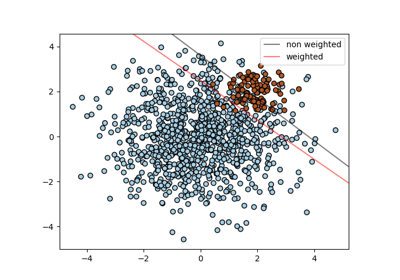sklearn.datasets.make_blobs¶
-
sklearn.datasets.make_blobs(n_samples=100, n_features=2, *, centers=None, cluster_std=1.0, center_box=- 10.0, 10.0, shuffle=True, random_state=None, return_centers=False)[source]¶ Generate isotropic Gaussian blobs for clustering.
Read more in the User Guide.
- Parameters
- n_samplesint or array-like, default=100
If int, it is the total number of points equally divided among clusters. If array-like, each element of the sequence indicates the number of samples per cluster.
Changed in version v0.20: one can now pass an array-like to the
n_samplesparameter- n_featuresint, default=2
The number of features for each sample.
- centersint or ndarray of shape (n_centers, n_features), default=None
The number of centers to generate, or the fixed center locations. If n_samples is an int and centers is None, 3 centers are generated. If n_samples is array-like, centers must be either None or an array of length equal to the length of n_samples.
- cluster_stdfloat or array-like of float, default=1.0
The standard deviation of the clusters.
- center_boxtuple of float (min, max), default=(-10.0, 10.0)
The bounding box for each cluster center when centers are generated at random.
- shufflebool, default=True
Shuffle the samples.
- random_stateint, RandomState instance or None, default=None
Determines random number generation for dataset creation. Pass an int for reproducible output across multiple function calls. See Glossary.
- return_centersbool, default=False
If True, then return the centers of each cluster
New in version 0.23.
- Returns
- Xndarray of shape (n_samples, n_features)
The generated samples.
- yndarray of shape (n_samples,)
The integer labels for cluster membership of each sample.
- centersndarray of shape (n_centers, n_features)
The centers of each cluster. Only returned if
return_centers=True.
See also
make_classificationA more intricate variant.
Examples
>>> from sklearn.datasets import make_blobs >>> X, y = make_blobs(n_samples=10, centers=3, n_features=2, ... random_state=0) >>> print(X.shape) (10, 2) >>> y array([0, 0, 1, 0, 2, 2, 2, 1, 1, 0]) >>> X, y = make_blobs(n_samples=[3, 3, 4], centers=None, n_features=2, ... random_state=0) >>> print(X.shape) (10, 2) >>> y array([0, 1, 2, 0, 2, 2, 2, 1, 1, 0])

